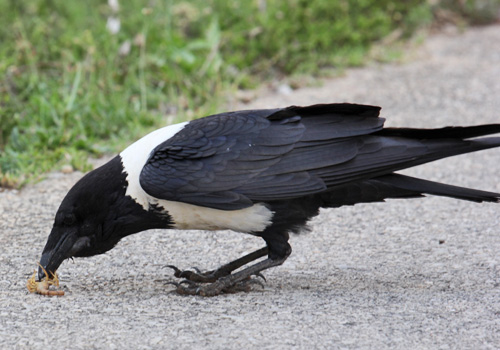POST AUTHOR
Ronel has 24 years corporate experience at senior levels (finance, mining, IT, manufacturing & agriculture), a B.Com degree (Business Management & IT)
and postgrad Business Management (Henley). She has also started 6 small businesses over the past 22 years, 5 of which are still operational today
due to her expertise in Digital Marketing. Ronel helps entrepreneurs to grow their businesses via a sustainable competitive advantage
in the Digital Arena.
POST DATE: 2017-01-24
POST UPDATED: 2020-04-26
POST UPDATED: 2023-07-10
SAFE WEBSITE PORTING WHEN YOU CHANGE DOMAIN NAME
There are many perfectly valid reasons for a business to undergo a name change: market or services changed, ownership changed,
fresh branding was required, legal constraints or even for SEO (Search Engine Optimisation) reasons.
The technical side of implementing such a business name change (and likely the website's domain name change) is tricky. The
Perils of changing your Website Domain Name & Porting your Website are legion!
If you've been toying with the idea of changing your website's name and porting your site to a new domain, this post is for you.
It will either convince you to leave well alone, or give you the courage to get it done. Either way, this is not for sissies!
Fortunately for me, some years back and only a few months after launching a new brand, I received professional advice (because I ask for help,
often!) that our brand name could be better. It involved a tiny change in the name, but the repercussions could not have been bigger!
Of course, the complexities of porting a website to a new domain will differ based on the type of website you have. The experience I logged
below involved both a custom-developed website as well as a Wordpress Blog.
One of the key concerns (apart from mountains of risky work), is that you stand to lose some of the SEO juice you've accumulated and
search engines also look at longevity of your domain at its specific IP address to help calculate your credibility.
You also risk confusing your loyal followers and clients unless you take great pains to ease them through the transition.
You can counter the SEO losses somewhat, but you will always take a slight step back despite your best efforts -
so only do this if it is absolutely necessary, and do it as well as you possibly can!
Here are the obvious and not-so-obvious steps that I trundled through, that will hopefully help you.
My 33-step checklist for porting your website to a new domain:
- Plan to port your website during a period that is quiet for your business. I did mine over the weekend but if you run a
windsurfing or trail-hiking business, weekends will NOT be good for you.
- Register the new domain name and set up folders, permissions etc as required. Get the host to set up SSL, auto-redirect to HTTPS,
auto-redirect to your preferred version of the website (WWW. or not) and to enable GZIP compression.
- If you are going to do it properly so as to not have to do it again for purposes of avoiding copycats, also register the .com .org .biz .net
etc versions of your domain.
- Update your Logo, website header / footer as appropriate. Consider that you want your regular clients and followers to not be
confused when they suddenly land on a new website (even though it may look the same). You can achieve this with a small, noticeable note that
states something like "Previous Brand XXX. This can also temporarily be added at the bottom of your new logo to make it easy to disseminate
everywhere.
- Update the letterheads in offline documents like invoices and training slides.
- Update all photographs that were previously imprinted with the brand name, to have the new brand name. Painful.
- Make a full back-up of the working website as it stands, as well as of any databases.
- While in back-up state, I did a full "search and replace" to change all instances of the domain name across all website folders.
Think this through very carefully as the sequence matters. Also consider any canonical changes (i.e. from using the www. to non-www;
http to https etc, or vice versa). At first I forgot instances where slightly different versions of this was required, e.g. for my
blog which is in a sub-directory.
- Review testimonials. In some places you will not be able to fix your brand name, e.g. in Tripadvisor reviews or in
Facebook reviews where clients used your business name.
- Restore the updated website to the new domain.
- Set up any databases in your C-panel, if required.
- Restore your database to the new database structures. Update pointers to your database in your WordPress or similar folders,
if required.
- Set up your new e-mail addresses in your C-panel. Then on your laptop and mobile device/s.
- Test and test and test your website. You are bound to come across some gremlins e.g. deep within your contact form and such.
Test everything.
- In platform sites like Wordpress, you may need to re-setup all the photos in blog posts, sometimes they are there, but "unlinked" and
you'll need to re-link photos to each blog post.
- Bad news: all the Likes etc that you may have accumulated on your Blog posts - e.g. using 3rd party software like GetSocial,
will reset to Nil. Sorry for you; I could find no way around it unless you were willing to pay a pretty packet for a paid service that
would somehow rebuild your likes for as long as you pay your annual fee. For me, with only 3 months of cred built up, I was happy (enough)
to start again.
- You may need to create new log-ins to access your Wordpress admin panel, and/or to update same in the appropriate Wordpress file.
- Set up permanent 301 redirects from the .htaccess on your old website, to point each page to the concomitant page on the new domain.
Remove all other pages and files from your old site. Similarly set up redirects from your sister-sites .com .org etc to your .co.za or
whatever you decide to use as your main domain.
- Redirect (auto-forward) email sent to your old address/es automatically to your new e-mail address.
- You may need to set up a new Gravatar if you are going to eventually cease using your old e-mail address.
- Ideally, you use the same Google Account login to set the new website's Search Console, Analytics and Google Ads up with - this provides
continuity of metrics to allow future comparison. Google makes provision for this. Alternatively, you may need to set up a new Account on Google if the
old website was unwisely set up using a personal Google log-in.
- The Analytics code snippet should still work, though you may want to create a new
Analytics account if your website content will change sufficiently too - it's up to you whether you want continuity of metrics and the ability
to compare before/after states more easily.
- Set up your new Google Webmaster Search Console (you may have multiple domains behind one Google Account login) and verify your new site.
You will need to load ALL versions of your site: www / non-www /
http / https - then only can you select your preferred site. Submit your new updated XML sitemap to Google.
- IMPORTANT: Search Console allows you to inform Google that you have moved your website to this new domain / address via the "Change of Address"
functionality - this helps Google to transfer any ranking "juice" you may have
accumulated on your old site, to the new site, theoretically fairly quickly.
- If you were able to use the same Google Account, the good news is that you can simply continue using the same reCaptcha codes without needing new setup.
Similarly, Analytics will work seamlessly, just check your Conversion settings (if they were generic enough using: CONTAINS "thanks", then no change will be
needed, else you may need to set up a new Conversion Event in Analytics and pull it through to Google Ads.
- The bad news is that since a permanent redirect was set up from your old website to your new,
Google Ads will quickly disapprove your old Ads on the
old website's Google Ads, since the landing page will present a "Destination Mismatch". Ads and Assets will need to be updated to reference the
new Landing Page names and text assets reviewed to update the business name. If you have old style text Ads, you'll be forced to create an entirely new
Responsive Campaign, sorry.
- Change your Facebook Name. And Logo. And web address under About. And e-mail address. And trawl through past posts and change the
links to pages and blog posts, to point to your new domain (note: this isn't strictly necessary as your redirects will take care of any clicks,
it just causes less confusion - for longer histories, consider changing the links in the last 3 months' worth of posts). Very painful.
- PR: Post something regarding the name change and give it a good reason! Re-assure followers they don't need to do anything as
everything will be auto-forwarded.
- Same for LinkedIn, Twitter and so on. Each is a minefield of what is allowed and what not - be prepared to contact them directly
for help at some point.
- Same for your mailing list program where you update your templates, logos included etc. You need to be super-alert as they
often allow you to change your company name and web address but some programming in the background that you cannot reach still points the
"preferences" or "unsubscribe" actions to the old domain name. Stay sharp.
- Check your Facebook Business marketing campaigns, landing page addresses, pixel snippet etc.
You may want to register a new Facebook for Developers App ID and get fresh code snippets for FB SDK tools you like to use.
- Change your business cards and order new ones to be printed.
- Double-check, then, most importantly, at some point you'll have done enough... Let it Go.

The ultimate message here is to pick your brand (and domain) name with care, then look after it. Treasure the Search Engine Optimization
that you've built up on it and value it like a solid entry in your asset column.
And if you DO need to change it, understand that it will impact every facet of your
Digital Marketing Engine and USP Implementation.
What's in a name? Everything!
Please let us know if you know of any missing steps that may applyto slightly different application scenarios, I literally just documented my
own porting experiences here.
COMMENTS ON THIS POST
2023-07-09 Johan van der Meer: I appreciate the methodical way in which you work, leaving nothing to chance! Your expertise and advice is much appreciated.
Ronel: Thanks Johan; the Porting of Muir Optometrists to Eden Optometrists
presented a great opportunity to update this old blog post :)





![]()